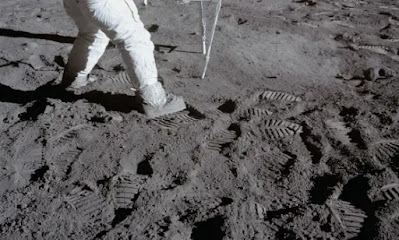 |
| Image credit: Alice Gorman |
It's finally here! I made my own signature scent, thanks to Elke at Red Rosie Studio in Adelaide. Just for something different to do, I and my elegant colleague Dr Mirani Litster did a perfume-making workshop. In two and a half hours, we learned a lot about the process of perfume-making and how to mix ingredients to make something unique. For example, we learnt that an accord is a suite of different scents which you can use as a base for other things. Some accords are very famous in themselves.
Then we made a perfume and Elke bottled it in a spray bottle, and printed a label with our perfume's name on it. It was so much fun!
Of course I wanted to make a Dr Space Junk signature scent! At the beginning Elke asked us to jot down any ideas we had to use as a guide of sorts. I hadn't given this as much thought as I probably should have, but I did know from meeting Marina Barcenilla, the planetary geochemist behind AromAtom, that it wouldn't be possible to replicate the actual fragrance of somewhere in space without the kinds of resources that a planetary geochemist has access to.
I'll give a shout-out to Marina here, because she was kind enough to send me a sample pack of her perfume. When I first tried the lunar one, it smelt so otherworldly, that every time I caught it's trace on my skin my brain did a flip as it was so obviously not of Earth. The smell transported me to a place I had never been, and likely would never go to, but which had a powerful and evocative effect on my brain.
I knew we were going to be doing something different with Elke. The inspirations, as I wrote them down in my notes before starting, were:
Night
Dark
Moon garden
The space between the stars
Back when the Internet was but a kitten, before even the World Wide Web, there was a website about how to grow a Moon garden with plants which flowered under moonlight, or whose flowers gave up their fragrance as night fell. I'm not any sort of gardener, but I was quite captivated by this idea. I imagined what it might smell like to stand in such a garden and gaze up at the Moon. This was the inspiration behind my Dr Space Junk scent, put together in the most unsystematic way possible.
The ingredients are:
Chypre Accord 5 parts
Rich Amber Accord 8 parts
White Sandalwood 2 parts
Narcotic Floral Accord 8 parts
Frankinsense 3 parts
Ozone 1 part
I chose Chypre Accord as the starting point, not because I knew what it was, but because I had heard the term somewhere and it sounded ancient and musty and hypnotic. Then my elegant colleague Dr Litster suggested that I try ozone as an element. Ozone was pale driftwood shining like bones in my night garden, and I knew it had to be in there. I also wanted the Narcotic Floral Accord to connote the madness induced by moonlight. Narcotic florals are while flowers which are often night-blooming. Frankinsense is an old favourite of mine, so that was included too.
I needed Elke's advice to tie this all together and make it work as a coherent scent. She recommended the Rich Amber Accord, and the White Sandalwood. I played around with proportions, and suddenly it came together as an actual perfume.
It felt pretty amazing to leave at the end of the afternoon with a bottle of eau de parfum which I had designed! (And if you contact Red Rosie Studio and ask for the Dr Space Junk, you can buy your own bottle. All the perfumes people create are kept on file. I mention this because some people asked me about it).
I'm pretty keen to create another one, and this time I know more about where my inspiration will come from. I'd like to have a go at Asteroid 551014, the asteroid named after me, which I feel very close to.
And this one, for a favourite quote from the story Rocket Man by Ray Bradbury:
And from the opened case spilled his black uniform, like a black nebula, stars glittering here or there, distantly, in the material. I kneaded the dark stuff in my warm hands; I smelled the planet Mars, an iron smell, and the planet Venus, a green ivy smell, and the planet Mercury, a scent of sulphur and fire; and I could smell the milky moon and the hardness of stars.











